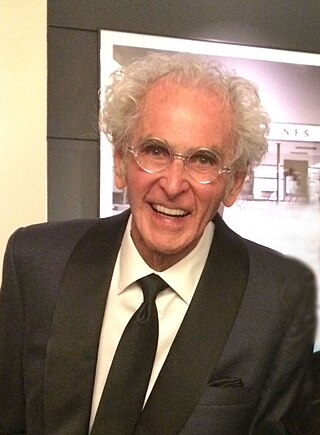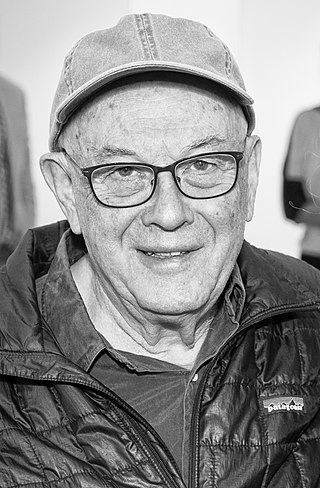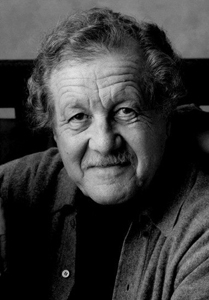Related Research Articles

Colstrip is a city in Rosebud County, Montana, United States. The population was 2,096 at the 2020 census.

Sebastião Ribeiro Salgado Júnior is a Brazilian social documentary photographer and photojournalist.

Paul Strand was an American photographer and filmmaker who, along with fellow modernist photographers like Alfred Stieglitz and Edward Weston, helped establish photography as an art form in the 20th century. In 1936, he helped found the Photo League, a cooperative of photographers who banded together around a range of common social and creative causes. His diverse body of work, spanning six decades, covers numerous genres and subjects throughout the Americas, Europe, and Africa.

Sally Mann HonFRPS is an American photographer known for making large format black and white photographs of people and places in her immediate surroundings: her children, husband, and rural landscapes, as well as self-portraits.

Jerry Norman Uelsmann was an American photographer.

Josef Koudelka is a Czech-French photographer. He is a member of Magnum Photos and has won awards such as the Prix Nadar (1978), a Grand Prix National de la Photographie (1989), a Grand Prix Henri Cartier-Bresson (1991), and the Hasselblad Foundation International Award in Photography (1992). Exhibitions of his work have been held at the Museum of Modern Art and the International Center of Photography, New York; the Hayward Gallery, London; the Stedelijk Museum Amsterdam; and the Palais de Tokyo, Paris.
Robert Adams is an American photographer who has focused on the changing landscape of the American West. His work first came to prominence in the mid-1970s through his book The New West (1974) and his participation in the exhibition New Topographics: Photographs of a Man-Altered Landscape in 1975. He has received two Guggenheim Fellowships, a MacArthur Fellowship, the Deutsche Börse Photography Prize and the Hasselblad Award.
Gilles Peress is a French photographer and a member of Magnum Photos.

Stephen Shore is an American photographer known for his images of scenes and objects of the banal, and for his pioneering use of color in art photography. His books include Uncommon Places (1982) and American Surfaces (1999), photographs that he took on cross-country road trips in the 1970s.

Bruce Landon Davidson is an American photographer. He has been a member of the Magnum Photos agency since 1958. His photographs, notably those taken in Harlem, New York City, have been widely exhibited and published. He is known for photographing communities that are usually hostile to outsiders.
Richard Misrach is an American photographer. He has photographed the deserts of the American West, and pursued projects that document the changes in the natural environment that have been wrought by various man-made factors such as urban sprawl, tourism, industrialization, floods, fires, petrochemical manufacturing, and the testing of explosives and nuclear weapons by the military. Curator Anne Wilkes Tucker writes that Misrach's practice has been "driven [by] issues of aesthetics, politics, ecology, and sociology." In a 2011 interview, Misrach noted: "My career, in a way, has been about navigating these two extremes - the political and the aesthetic."

Jerome Liebling was an American photographer, filmmaker, and teacher. The documentary filmmaker Ken Burns, who studied with him at Hampshire College, called Liebling his mentor, and used one of Liebling's photographs on the cover of his 2022 book Our America: A Photographic History.
Ralph Gibson is an American art photographer best known for his photographic books. His images often incorporate fragments with erotic and mysterious undertones, building narrative meaning through contextualization and surreal juxtaposition.
Raghubir Singh (1942–1999) was an Indian photographer, most known for his landscapes and documentary-style photographs of the people of India. He was a self-taught photographer who worked in India and lived in Paris, London and New York. During his career he worked with National Geographic Magazine, The New York Times, The New Yorker and Time. In the early 1970s, he was one of the first photographers to reinvent the use of color at a time when color photography was still a marginal art form.
Dona Ann McAdams is an American photographer.
Jack Lueders-Booth is an American photographer. He retired from teaching at Harvard in 2000, and continues to live and work in the Boston area.
Mark Haworth-Booth is a British academic and historian of photography. He was a curator at the Victoria & Albert Museum in London from 1970 to 2004.
Bryan Schutmaat is an American photographer based in Texas, USA. Schutmaat book's include Grays the Mountain Sends (2013), which won the Aperture Foundation Portfolio Prize; Islands of the Blest (2014); Good Goddamn (2017) and County Road (2023). His work is held in the collections of Baltimore Museum of Art, Hood Museum of Art, Middlebury College Museum of Art, Museum of Fine Arts, Houston and San Francisco Museum of Modern Art.
William Clift is an American photographer known for his black-and-white imagery of landscapes and of architectural subjects. Most of his work has been made in New Mexico, including Santa Fe where he has lived and worked since 1971, and of Mont Saint Michel in France, and St. Louis, MO.
Baldwin Lee is a Chinese-American photographer and educator known for his photographs of African-American communities in the Southern United States. He has had solo exhibitions at the Chrysler Museum of Art and the Museum of Contemporary Art of Georgia, and received a Guggenheim Fellowship. His work is held in many private and public collections including the Museum of Modern Art in New York and Yale University Art Gallery.
References
- 1 2 3 4 5 Nazaryan, Alexander (April 29, 2016). "Superfund Superstar: David Hanson Takes Beautiful Photos of Hideous Places". Newsweek. Vol. 166. pp. 60–62. Retrieved February 27, 2023.
- 1 2 Oates, Joyce Carol (March 11, 2016). "Poisoned Landscapes". The New Yorker. Retrieved February 27, 2023.
- ↑ "Biographical Information | David T Hanson Photography". www.davidthanson.net. Retrieved 2023-03-20.
- ↑ Canales, Jimena (2018). Waste Land. Fairfield, Iowa: Taverner Press. pp. 163–171.
- ↑ Thornton, Genie (August 19, 1984). "The Modern Still Favors the Documentary Approach". The New York Times. pp. Section H: 21.
- ↑ "New Photography 2: Mary Frey, David Hanson, and Philip-Lorca diCorcia". MoMA. Retrieved March 20, 2023.
- ↑ Hanson, David T. (1997). Waste Land: Meditations on a Ravaged Landscape. Reading, PA: Aperture. ISBN 0-89381-726-0.
- ↑ "The American landscape: from wilderness to wasteland – in pictures". The Guardian. March 17, 2016. Retrieved February 27, 2023.
- 1 2 3 4 5 Hanson, David (1996). Critical Adjustments. Providence, Rhode Island: Brown University.
- ↑ Gablik, Suzi (1991). The Reenchantment of Art. New York: Thames & Hudson. pp. 76–81. ISBN 0-500-27689-7.
- ↑ "David T. Hanson". John Simon Guggenheim Memorial Foundation. Retrieved 2023-03-22.
- ↑ "National Endowment for the Arts: 1986 Annual Report" (PDF). National Endowment for the Arts. 1986. Retrieved March 22, 2023.
- ↑ "1994 Annual Report: National Endowment for the Arts: Listing of Grants and Financial Reports" (PDF). National Endowment for the Arts. 1994. Retrieved March 22, 2023.
- ↑ "David T. Hanson | MoMA". The Museum of Modern Art. Retrieved 2023-05-13.
- ↑ Grundberg, Andy (July 13, 1990). "Beauty and Challenge In Modern Landscapes". New York Times. pp. Section C, p 14. Retrieved March 22, 2023.
- ↑ "David T. Hanson - Artists - Joseph Bellows Gallery". www.josephbellows.com. Retrieved 2023-04-06.
- ↑ Squires, Carol (2005). The Body at Risk. Berkeley, California: University of California Press. ISBN 978-0520247338.
- ↑ Best, Makeda (2021). Devour the Land: War and American Landscape Photography Since 1970. Cambridge, MA: Harvard Art Museums. ISBN 978-0300260083.